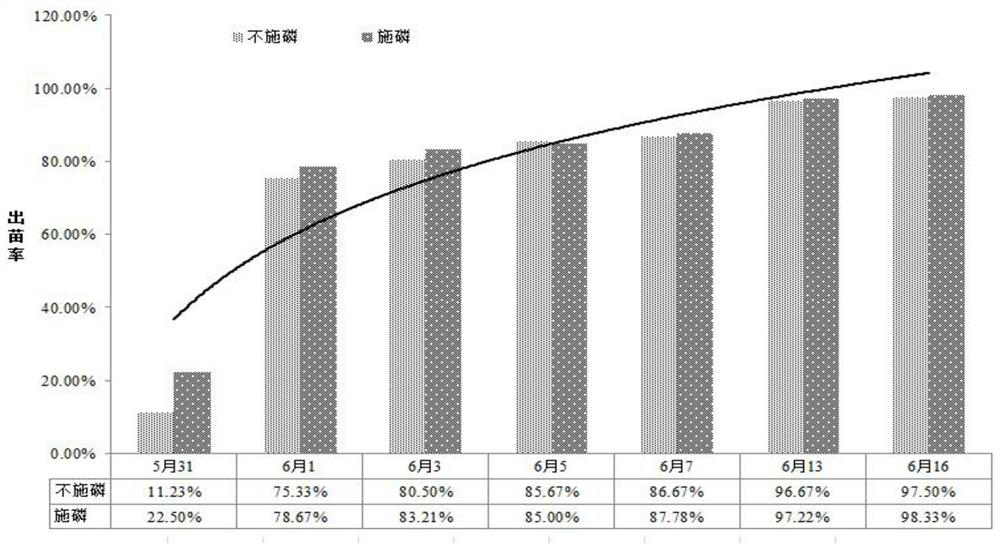A Cultivation Technique for Improving Low Temperature Resistance of Peanuts
A low-temperature resistant, peanut technology, applied in leguminous plant cultivation, seed coating/seed dressing, fertilizer made from biological waste, etc. and other problems, to achieve the effect of increasing the maturity of pods, easy emergence, and strengthening the effect of thermal insulation.
- Summary
- Abstract
- Description
- Claims
- Application Information
AI Technical Summary
Problems solved by technology
Method used
Image
Examples
Embodiment 1
[0028] The planting test base is located in Gongzhuling City, Jilin Province, and a plot with deep soil layer, fertile ploughing layer and flat terrain is selected.
[0029] The invention provides a cultivation technique for improving the low temperature tolerance of peanut, comprising the following production steps:
[0030] Step 1: soil preparation, ridge making, and fertilization: tilling depth of 20cm, use rotary tillage plows and harrows with the cultivated land to achieve deep, loose, fine, broken, flat, no weeds, no previous stubble and timely ridge formation; Ridge, the ridge distance is 60cm. Fertilizer is applied once as base fertilizer, every 666.7m 2 With 50kg of bio-organic fertilizer and 15kg of peanut peel after composting, then add 15kg of urea, 15kg of potassium sulfate, 35kg of superphosphate, and 8kg of calcium oxide, and set the test control group without superphosphate simultaneously, and the depth of fertilization is 15cm;
[0031] Step 2: Seed treatmen...
Embodiment 2
[0044] The planting test base is located in Gongzhuling City, Jilin Province, and a plot with deep soil layer, fertile ploughing layer and flat terrain is selected.
[0045] The invention provides a cultivation technique for improving the low temperature tolerance of peanut, comprising the following production steps:
[0046] Step 1: soil preparation, ridge making, and fertilization: plowing depth of 25cm, and using rotary tillage plows and harrows with the cultivated land to achieve deep, loose, fine, broken, flat, no weeds, no previous stubble and timely ridge formation; Ridge, ridge distance between 60cm. Chemical fertilizer is applied as base fertilizer once, every 666.7m 2 After composting, 50kg of bio-organic fertilizer and 15kg of peanut peel, 15kg of urea, 15kg of potassium sulfate, 25kg of superphosphate, 5kg of calcium oxide, and 10cm of fertilization depth;
[0047] Step 2: The peanuts are sun-dried for 3 days before peeling, and the shells are peeled 7 days befor...
PUM
 Login to View More
Login to View More Abstract
Description
Claims
Application Information
 Login to View More
Login to View More - R&D
- Intellectual Property
- Life Sciences
- Materials
- Tech Scout
- Unparalleled Data Quality
- Higher Quality Content
- 60% Fewer Hallucinations
Browse by: Latest US Patents, China's latest patents, Technical Efficacy Thesaurus, Application Domain, Technology Topic, Popular Technical Reports.
© 2025 PatSnap. All rights reserved.Legal|Privacy policy|Modern Slavery Act Transparency Statement|Sitemap|About US| Contact US: help@patsnap.com



